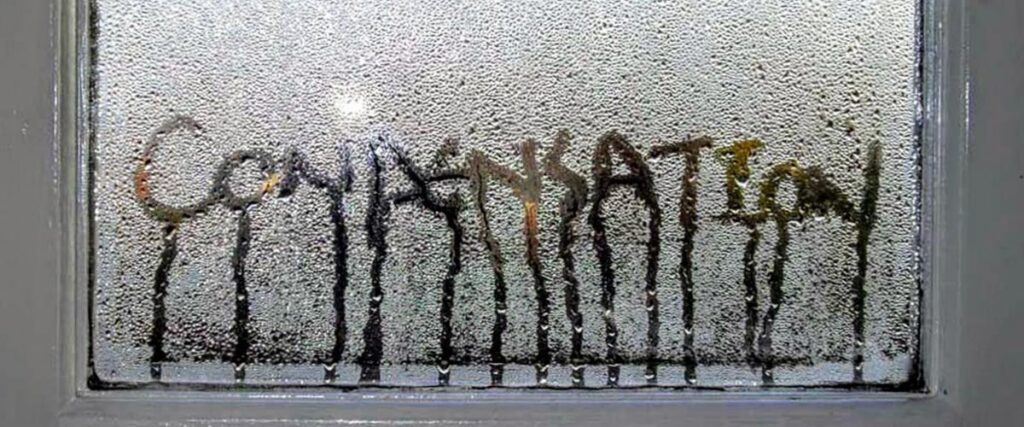Droplets (condensation) on the inside pane of your windows shouldn’t be there, and efficient windows make sure you don’t have to worry about it.
What causes condensation on windows? It happens when a window’s interior surface temperature is colder than the air inside. Condensation can block your views but also leads to mold and mildew around them, especially for window frames made of wood instead of vinyl or metal.
Your home is a surprisingly moist environment. When you take a shower, boil water, cook pasta, or wash dishes – any activity involving water – you’re introducing more moisture to your air. Often more than a gallon per day. Natural ventilation takes care of most of this problem, but when moisture inside your home is a different temperature than your windows, it can convert itself to water droplets on the glass. This happens in both hot and cold climates but is an issue in particular for windows in winter.
Reducing condensation avoids these problems and makes your home more comfortable. If the inside surface of your windows fogs up regularly, it might be time for new windows. Efficient windows are a great solution to cut condensation, and it’s easy to gauge a window’s ability to do this job for you. Our parent organization, the National Fenestration Rating Council, rates windows for their efficiency, and the Condensation Resistance rating is the one to check on the NFRC label. You should review the label, which remains on a window until it is installed, for a rating between 1 and 100. A higher rating means better protection against condensation.
If you’re like me, you’ll now be giving your windows the side-eye, worrying you might see condensation. But some condensation is OK, so here are a few reasons NOT to freak out and some tips on how to keep windows clear:
-condensation on the outside of a window is no big deal. Just on the inside.
-don’t worry if you see it on your bathroom window after showering. That’s a lot of moisture in the air! If you want to clear it faster, run your bathroom exhaust fan while you shower, and keep it on until the mirror is clear.
-the same goes for your kitchen windows while you’re cooking a meal. Just like in the bathroom, use an exhaust fan if you have one.

